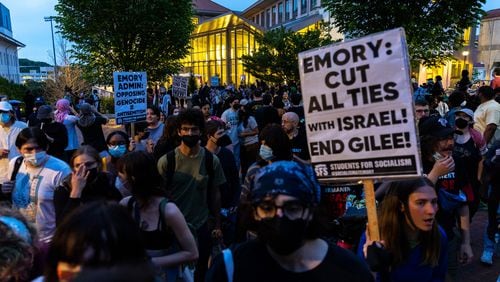Legacies. For better or worse, they are a parent’s ultimate gift; they run the gamut from a love of art or sport to an indifference to life or common decency. In any case, children either embrace or run from the skills, mores and wealth passed down from the previous generation (or generations, for that matter).
Imagine, then, that your last name is Heitz and you graduated from St. Helena High School in California’s Napa Valley with kids named Mondavi and Shafer. Everyone you know is in winemaking. Your dad is an incredibly famous, respected winemaker and your grandfather was the legendary Joe Heitz, who invented the first “cult cabernet sauvignon.”
What are you going to do when you grow up?
In the case of Harrison Heitz, grandson of Joe, son of David, you escape to Washington State to study information systems technology … at least, in the short term.
Harrison Heitz was in town in March for the High Museum Wine Auction and had a few things to say about legacies — his and the winery he now works for that bears his last name.
“When I was growing up, I was not really aware of how famous my grandfather was,” the polite and genial Heitz said. “It was not until I left Napa Valley that I could see just how important a figure he was in California winemaking.”
A quick primer on Joe Heitz: He was one of the first winemakers to designate a vineyard (Martha’s Vineyard) on a wine label in 1966. Starting in the 1970s, he made the first exclusive, had-to-have Napa cabernet sauvignon, which would later be known as a cult wine. He was an innovator with his use of French oak barrels and is as responsible as anybody, including the more renowned Robert Mondavi, for transforming Napa Valley from a sleepy agricultural community to America’s winemaking juggernaut.
Harrison’s dad, David, is no slouch, either. Not only did he extend his father’s legacy of fine winemaking, he also is known for his stoicism when Heitz Wine Cellar faced several crises in its vineyards and cellar during the 1980s and ’90s.
After several years in Seattle, and then a few more doing information technology consulting in Napa Valley, Harrison returned to the fold in 2012 to embrace his family’s winemaking heritage. He has carved out a role as the winery’s brand ambassador. Despite having a young family, he travels extensively (one week a month, on average) throughout North America and Asia promoting Heitz Cellar.
During our lunch at the Ritz-Carlton Buckhead, the soft-spoken but confident Heitz seemed at peace playing his part in the evolving Napa dynasty. This year marks the 50th year since Harrison’s grandfather made the first Heitz Wine Cellar’s Martha’s Vineyard cabernet sauvignon.
Beyond his role within the family business, Heitz also is cognizant of the winery’s unique place in the present and future Napa Valley.There are few third-generation, family-owned wineries and there are now dozens of cult cabernet makers in the market.
“It’s hard to make your wine ‘sexy,’ when you are trying to do what you’ve always done for decades — just doing the best job you can with the resources you have,” he said between bites of pasta carbonara.
These days, Heitz Cellar focuses on not-so-sexy incremental improvements, like buying the most up-to-date lab equipment, what Heitz called “quiet change.” Other, newer wineries need to make a splash in the market with elevated alcohol levels and heavily extracted wines. Heitz pointed out that his father’s style, while still quite powerful, is plainly more restrained than many of Napa’s blockbuster cabernet sauvignons.
“We figure if we stay consistent, people will recognize the quality and come back. We’ve seen trends come and go, but in the long run we’ll continue to be successful by not setting alcohol targets. We try to make great wine by setting taste targets.”
“How do you maintain a legacy?” Heitz said, parroting my last question. “You polish it. You improve it, then you hope the next generation will do the same.”





